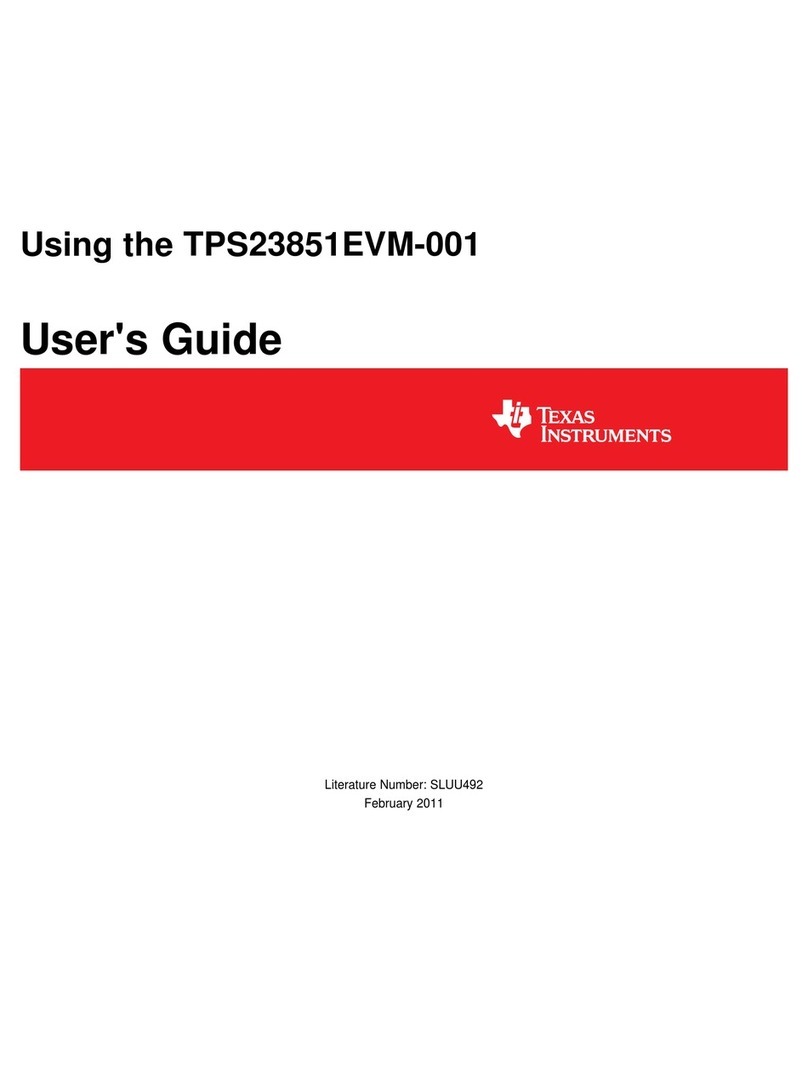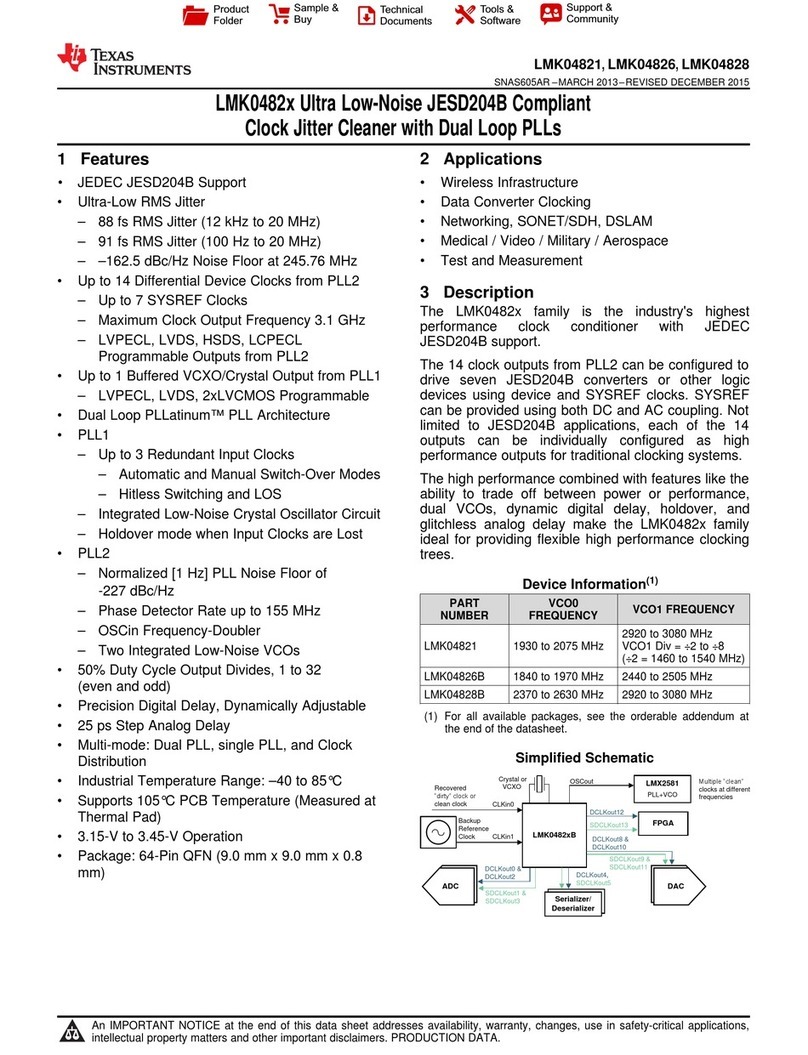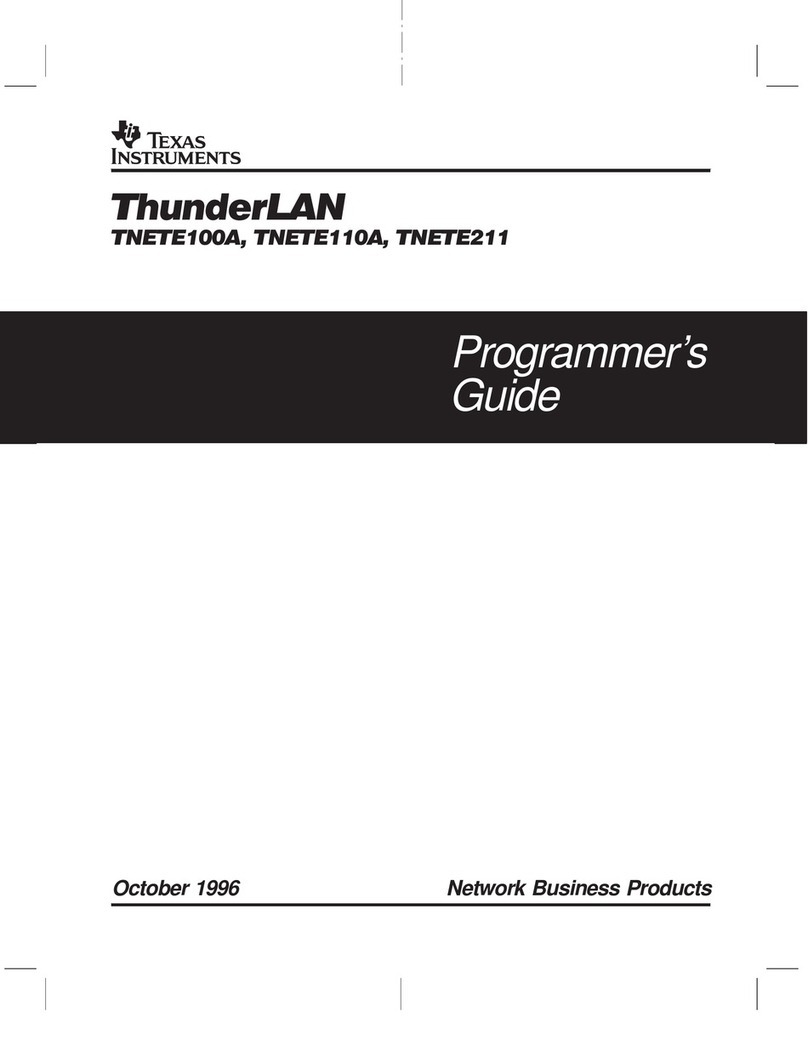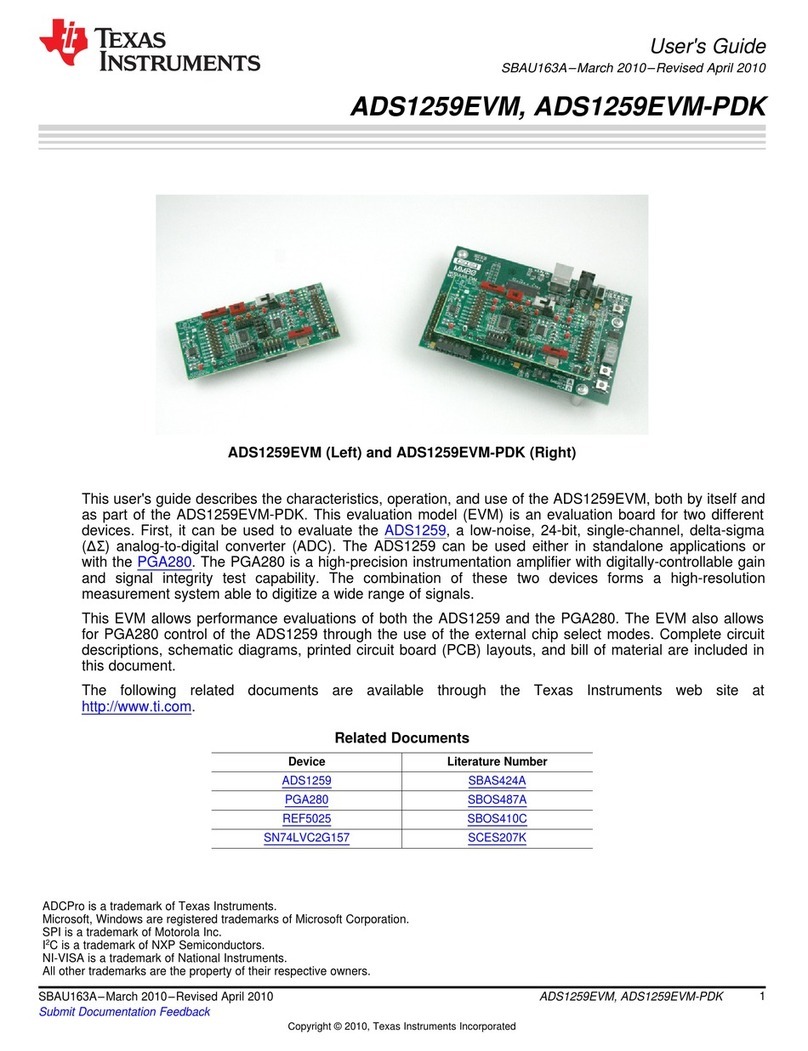
TI Confidential – NDA Restrictions
APLL2
APLL1
I2C/SPI
LOGIC I/Os
STATUS
DPLL
÷R
XO/
TCXO/
OCXO
VDD
3.3 V
VDDO
1.8 / 2.5 / 3.3 V
Registers EEPROM,
ROM
Device Control
and Status
Power Conditioning
LMK05318
Ultra-Low Jitter
Network Synchronizer Clock
Hitless
Switching
Differential
or LVCMOS
Differential
or HCSL
DCO
PRIREF
SECREF VCO1
VCO2
OUT0
OUT1
OUT5
÷OD
OUT4÷OD
OUT2
OUT3
OUT7÷OD
OUT6
÷OD
×1, ×2
÷
÷
÷
Output
Muxes
Differential,
HCSL, or
1.8-V LVCMOS
÷
÷OD
÷OD
An IMPORTANT NOTICE at the end of this data sheet addresses availability, warranty, changes, use in safety-critical applications,
intellectual property matters and other important disclaimers. ADVANCE INFORMATION for pre-production products; subject to
change without notice.
LMK05318B
SNAS801 –OCTOBER 2019
LMK05318B Ultra-Low Jitter Network Synchronizer Clock With Two Frequency Domains
1
1 Features
1• One Digital Phase-Locked Loop (DPLL) With:
– Hitless Switching: ±50-ps Phase Transient
– Programmable Loop Bandwidth With Fastlock
– Standards-Compliant Synchronization and
Holdover Using a Low-Cost TCXO/OCXO
• Two Analog Phase-Locked Loops (APLLs) With
Industry-Leading Jitter Performance:
– 50-fs RMS Jitter at 312.5 MHz (APLL1)
– 125-fs RMS Jitter at 155.52 MHz (APLL2)
• Two Reference Clock Inputs
– Priority-Based Input Selection
– Digital Holdover on Loss of Reference
• Eight Clock Outputs With Programmable Drivers
– Up to Six Different Output Frequencies
– AC-LVDS, AC-CML, AC-LVPECL, HCSL, and
1.8-V LVCMOS Output Formats
• EEPROM / ROM for Custom Clocks on Power-Up
• Flexible Configuration Options
– 1 Hz (1 PPS) to 800 MHz on Input and Output
– XO/TCXO/OCXO Input: 10 to 100 MHz
– DCO Mode: < 0.001 ppb/Step for Precise
Clock Steering (IEEE 1588 PTP Slave)
– Advanced Clock Monitoring and Status
– I2C or SPI Interface
• PSNR: –83 dBc (50-mVpp Noise on 3.3-V Supply)
• 3.3-V Supply With 1.8-V, 2.5-V, or 3.3-V Outputs
• Industrial Temperature Range: –40°C to +85°C
2 Applications
• SyncE (G.8262), SONET/SDH (Stratum 3/3E,
G.813, GR-1244, GR-253), IEEE 1588 PTP Slave
Clock, or Optical Transport Network (G.709)
• 400G Line Cards, Fabric Cards for Ethernet
Switches and Routers
• Wireless Base Station (BTS), Wireless Backhaul
• Test and Measurement, Medical Imaging
• Jitter Cleaning, Wander Attenuation, and
Reference Clock Generation for 56G/112G PAM-4
PHYs, ASICs, FPGAs, SoCs, and Processors
3 Description
The LMK05318B is a high-performance network
synchronizer clock device that provides jitter cleaning,
clock generation, advanced clock monitoring, and
superior hitless switching performance to meet the
stringent timing requirements of communications
infrastructure and industrial applications. The ultra-
low jitter and high power supply noise rejection
(PSNR) of the device can reduce bit error rates
(BER) in high-speed serial links.
The device can generate output clocks with 50-fs
RMS jitter using TI's proprietary Bulk Acoustic Wave
(BAW) VCO technology, independent of the jitter and
frequency of the XO and reference inputs.
Device Information(1)
PART NUMBER PACKAGE BODY SIZE (NOM)
LMK05318B VQFN (48) 7.00 mm × 7.00 mm
(1) For all available packages, see the orderable addendum at
the end of the data sheet.
Simplified Block Diagram




































